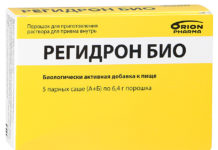Sesame or sesame oil is used in cooking, medicine, cosmetology and technology. The beneficial properties and contraindications of sesame oil were known to people more than 6 centuries ago. Sesame is one of the oldest plants in agriculture. It began to be cultivated on the African continent. The ancient Assyrians and Egyptians valued sesame seeds and prepared bread, intoxicating drinks, and edible oil from it. According to one of the legends of the Assyrians, the gods tasted sesame fragrant oil to strengthen the body and spirit before the creation of the world.
Material Content:
Useful properties of sesame oil
Sesame seeds contain metals that do not pass into it during the manufacture of oil. But it contains a significant amount of minerals and vitamins, polyunsaturated (PUFA) and saturated (EFA) fatty acids. The lignans contained in the oil increase thermal stability and shelf life, so it is added to other vegetable oils to stabilize them.
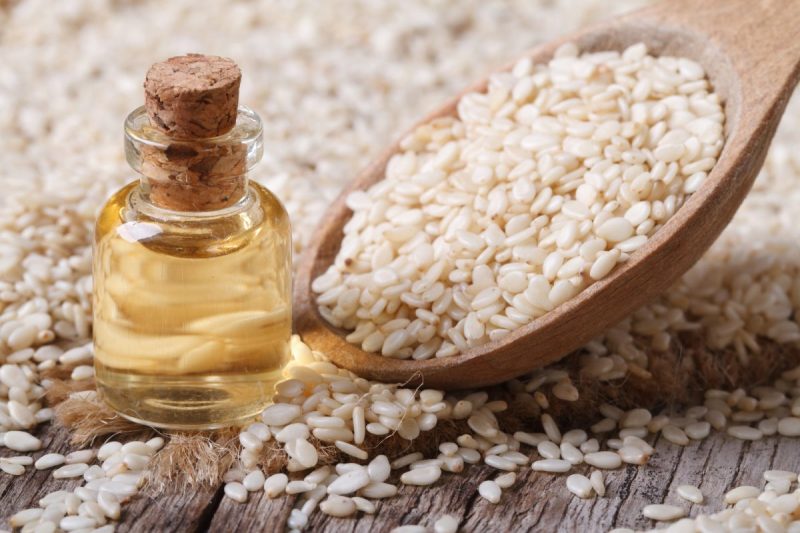
PUFAs are omega 3 and 6 fatty acids. It contains an almost equal amount of ω 9 and ω 6 - 42.8 and 40.4%, respectively. The oil contains ω 3 PUFA, which is 0.6%. For the therapeutic effect, the ratio ω 6 / ω 3 is important. Ideally, it should be 10/1 in the diet of a healthy person and 3/1 or 5/1 for therapeutic and preventive nutrition. The importance of PUFA balance is confirmed by a number of clinical studies.
So, for example, when eating sesame oil, mortality from cardiovascular pathologies is reduced by 70%.It has an inhibitory effect on the progression of the inflammatory process in patients with rheumatoid arthritis and has a beneficial effect on the well-being of patients with asthma.
Sesame oil contains α - (0.8 mg / 100 g of oil) and β + γ (26-28 mg) isomers of tocopherol. A mixture of isomers or vitamin E is of great importance to the human body.
It has a beneficial effect on:
- the sex glands of men and women, not without reason, tocopherol translates as "bringing children." Sesame oil:
- enhances lactation;
- normalizes the hormonal background and reduces the symptoms of menopause;
- stimulates sperm production;
- normalize the function of the prostate gland;
- increase erection and sex drive;
- integuments, contributing to:
- elimination of toxins;
- regeneration - healing without scarring;
- UV protection and prevention of age spots;
- rejuvenation - reduces wrinkles and stimulates collagen synthesis;
- cardiovascular system:
- prolongs the life of red blood cells;
- prevents the formation of blood clots;
- eliminates anemia;
- lowers blood pressure;
- the nervous system, participating in the formation of the myelin sheath of nerve fibers, which, among other things, facilitates the course of Alzheimer's disease;
- muscle tissue, providing synthesis of collagen fibers.
Sesame oil tocopherols prevent the development of malignant diseases, increase the digestibility of magnesium and protect fat-soluble vitamins from destruction by oxygen.
The component under discussion has a high antiradical activity, since it contains up to 600 mg / 100 g of sesamine oil and about 200 mg / 100 mg of sesamoline oil.
Read also: useful properties of sesame seeds
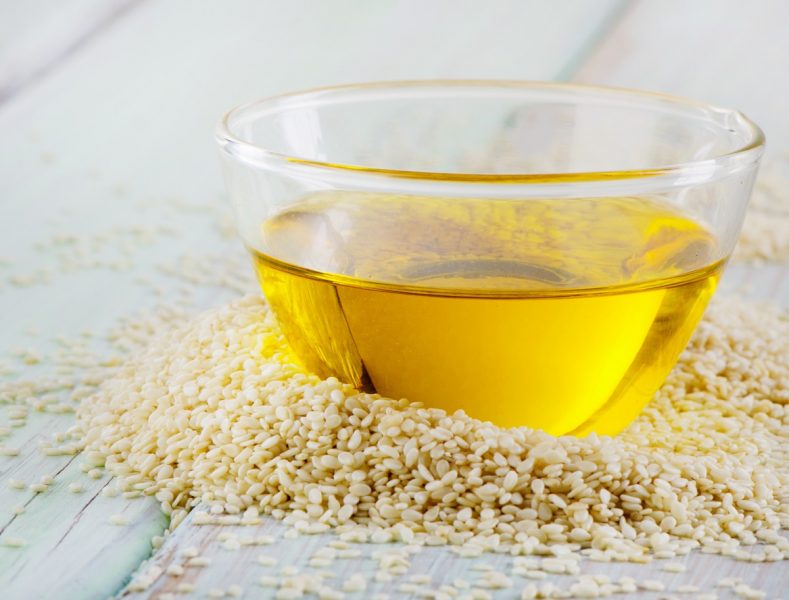
Inhibition of negative radicals increases due to a synergistic effect:
- tocopherols;
- β - carotene;
- lutein;
- zeaxanthin;
- phospholipids.
The antioxidant pool of sesame oil is the highest among vegetable oils.
The high content of phytolignans in it not only increases the shelf life (up to 6 months), but also increases the concentration of γ-tocopherol - the strongest antioxidant in the blood plasma and increases the period of its induction (increase in the number and activity).
Sesame oil is rich in calcium. A complex of calcium and phosphorus prevents the destruction of bone tissue and is an effective tool in the fight against osteoporosis. It is used as massage oil, warming up muscles, relieving hypertonicity (tension), relaxing and relieving pain. Oil is used for baby massage to treat inflammatory diseases.
The use in dietetic nutrition alleviates the condition of patients with irritable bowel syndrome, it normalizes weight - breaks down fat, contributing to weight loss, or helps “build meat” with exhaustion.
Fields of application of the plant product
Sesame oil is used in Thai, Japanese, Chinese, Indian traditional cuisine. In European cuisine it is used for making sauces, pastries, sweets.

It is widely used in aromatherapy, folk and official medicine. In cosmetology and perfumery, oil is used to make creams, hair and face masks, and perfume compositions.
In cosmetology
Sesame seed oil was used in the creation of cosmetics in ancient Egypt. Recipes based on it were given in papyrus dated 1500 BC. e. It was used in cosmetology of India, Assyria, Iran. In India, sesame oil is sacred, granting immortality. It is mentioned in the Vedas and Puranas. The goddess of love Lakshmi symbolizes the essence of sesame oil - eternal youth and beauty.

Sesame oil for face and body provides the following positive effect:
- cleans it from impurities and dead cells;
- Penetrating proteins deeply into the dermis, silicon and ascorbic acid provide the removal of toxins and stimulate collagen synthesis, thereby strengthening the epidermis, smoothing wrinkles, and evening out the relief.Prevents the appearance of age-related age spots;
- Vitamins of oil help to retain moisture in the skin, stimulate blood circulation, gas exchange and nutrition;
- normalizes skin pH, restores its barrier properties;
- Zinc contained in the oil helps eliminate pathogens, relieves redness and inflammation. Used in the treatment of skin diseases - psoriasis, eczema, mycosis, accelerates the healing of wounds and burns;
- phytosterols and PUFAs prolong the youth of the skin, eliminate signs of age-related changes;
- sesamol and other antioxidants protect the skin from UV, the effects of harmful environmental effects.
These properties of sesame oil are used in the preparation of home and industrial skin care products:
- oily and dry;
- problematic - prone to acne and irritation;
- fading and tired.
It is introduced into hygienic lipstick to soften the skin of the lips, caring creams for the eyes and skin in the orbital region, in sunscreen cosmetics, make-up removers. Sesame oil is used as a base base for aroma lamps. Oil is a component of baby creams. It is used for warming and relaxing massage.
In the form of baths, sesame oil is used to strengthen and grow nails. It has an antifungal effect on the nail plate. Therefore, oil is used in the treatment of mycosis of the nails.
Rubbing sesame oil of the beauties of the East into the scalp, they return their silkiness, give shine.
Sesame oil for hair:
- heals the structure of the scalp;
- prevents dandruff;
- normalizes the separation of sebum;
- accelerates hair growth.
It is used in the complex treatment of alopecia and seborrhea. Regular use of hair oil is a prevention of gray hair, protection from the damaging effects of the environment, UV radiation, the action of hard and salty sea water.
In traditional medicine
In traditional medicine, sesame oil is used as a solvent for antipsychotics. It prolongs the effect of the drug, reduces the severity of side effects, shortens the course of treatment, prevents the exacerbation of mental illness.
Shatbindu and Dabur are made from sesame oil - nose drops that cure ENT diseases - sinusitis, frontal sinusitis, sinusitis, chronic bronchitis and allergic rhinitis. Drops stimulate mental activity, relieve headache, improve memory.
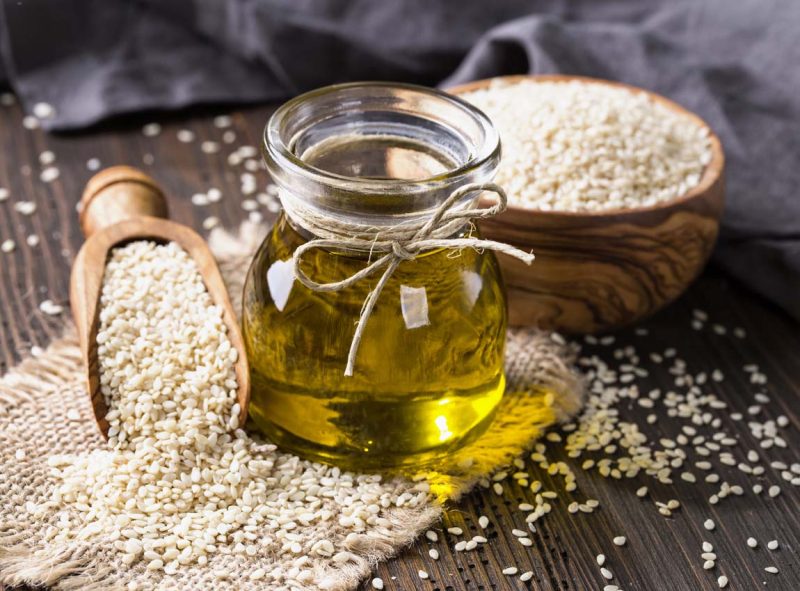
Ayurvedic company “Thousand Petals” produces therapeutic drops for eyes and ears based on sesame oil. Drops for the eyes of Drishti and Patanjali relieve fatigue, soothe, treat conjunctivitis and cataracts. With the help of drops, "Ayton" treat glaucoma and cataracts. Drops of Ujal normalize intraocular pressure.
Capsules with sesame sesame oil heal the liver, protect it from toxins, alcohols, reduce the level of "bad" cholesterol. Pharmaceutical companies Axis Labs, Universal Nutrition, SciVation produce dietary supplements containing concentrated sesamine.
Vitamin E is extracted from sesame oil - a complex of tocopherol isomers, which are sold in capsule form.
Folk remedies
If in official medicine the development of sesame oil is just beginning, then in traditional medicine it has been tried for centuries and is widely used in the treatment of many diseases.
In Ayurveda, it is recommended to cleanse and improve the body by morning rinsing of the mouth and nasopharynx with sesame oil. This procedure is called gandusha. You need to put sesame oil in your mouth and "sucking" it, hold for about 3 minutes. Thanks to this procedure, toxins are removed from the body, teeth and gums strengthen, the vocal cords become elastic, the mucosa is restored, and ENT and colds are prevented.
Heated sesame oil is used to rub the chest and feet with a cold, pneumonia, bronchitis.
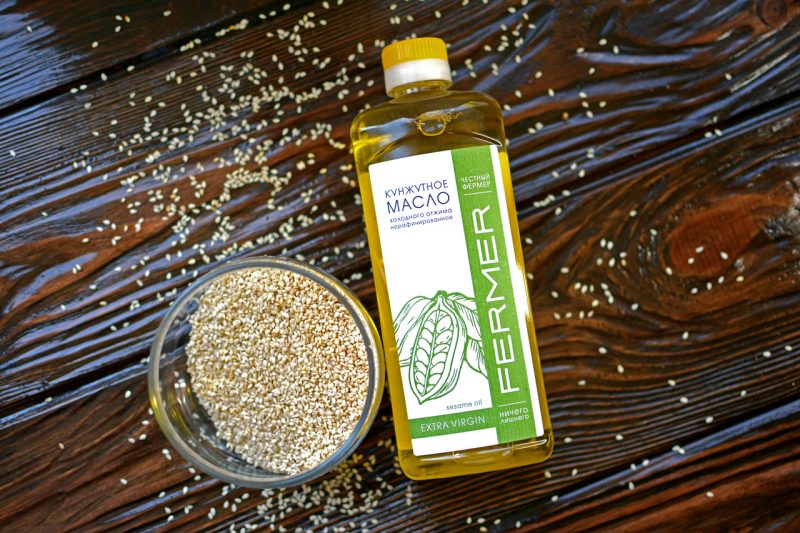
Compresses and oils applied to a burn or wound for 20-30 minutes contribute to their rapid healing without scars and hyperpigmentation.
Microclysters are made from heated oil to treat constipation, anal fissures, and internal hemorrhoids.
With pyelonephritis, urethritis, cystitis, sesame oil is taken orally for 2 weeks.
With joint inflammation, rheumatism, gout, heated oil is rubbed into the joint and wrapped with a warm cloth.
From otitis media, 1-2 drops of warm sesame oil are instilled into the ear.
To alleviate the condition of patients with Alzheimer's, it is recommended to instill 1-2 drops of oil in each nostril and rub it with their feet, hands, and do a head massage.
Sesame oil: methods of application and dosage
Different pathologies require different methods of applying sesame oil and its dose. The effectiveness of the therapeutic effect depends on how to take sesame oil and in what dosage.

Useful product accepted:
- 2 tsp. on an empty stomach with gastritis, ulcerative colitis, irritable bowel syndrome;
- 2 tsp. ½ before meals with constipation and atony of the intestine;
- for the prevention of diseases and in the complex treatment of various pathologies, take 1 tsp. oil 3 times a day.
Recommended doses of sesame oil, depending on age, are presented in the table:
| Age (years) | Quantity (drops) | Admission Terms |
|---|---|---|
| Adults and teenagers (> 14) | 20-30 | 2-3 times a day with meals |
| Children: | ||
| 1-3 | 3-5 | while eating |
| 4-6 | 5-10 | -«- |
| 7-9 | 10-15 | before meals |
| 10-14 | 20-30 | while eating |
The course of treatment is 3 months. If necessary, the course can be repeated after a week break.
Benefits and harm for the child's body
Sesame oil is useful for the child's body as a measure of the prevention of seasonal colds, for the treatment of colds and ENT diseases. Massage with herbal remedy relieves diaper rash in children, diaper dermatitis, softens and protects the skin. Massage soothes capricious children, improves falling asleep. Gum massage - facilitates teething, treats thrush, relieves pain and redness.

With spring vitamin deficiency in children, it is recommended to season the salad with sesame oil and vegetable salads. Oil in an age-related dosage enhances immunity.
Pupil intake of sesame oil will help to better absorb the learning material. For children who are intensely involved in sports, it will help relieve fatigue and muscle strength (as a grind), increase endurance and muscle strength.
However, more and more information appears about allergies caused by sesame oil. Scientists suggest that this is due to the expansion of the use of oil, which causes an overdose and an allergic reaction.
Contraindications
Since sesame oil is a natural product, there are not many contraindications to its use.
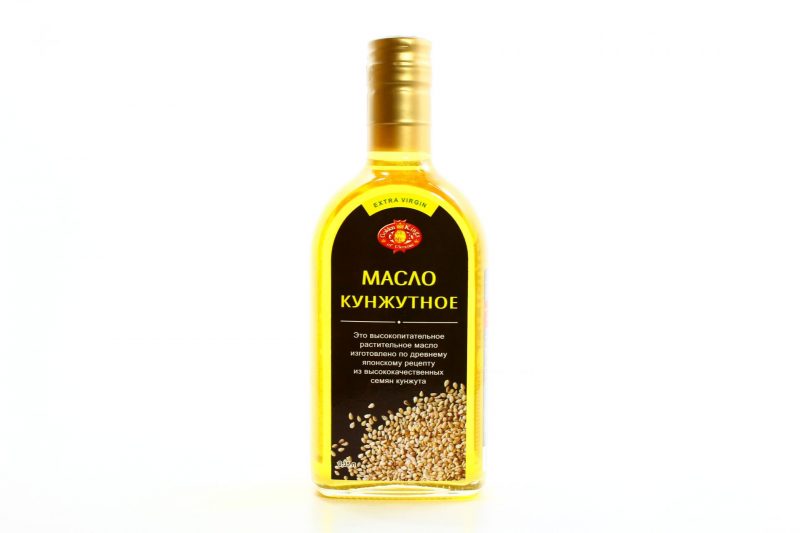
In addition to individual intolerance, before taking sesame oil, consult a doctor with people with:
- increased blood coagulability;
- tendency to form blood clots;
- varicose veins.
It is not recommended to use sesame oil and some preparations at the same time containing:
- aspirin;
- oxalic acid;
- female sex hormones (estrogens).
Oxalic acid with sesame oil calcium form insoluble compounds that are deposited in the form of calculi (stones and sand) in the kidneys, bladder and other hollow organs.
Phytoestrogens oil in combination with a hormonal drug can cause an excess of dose and related disorders in the body.







